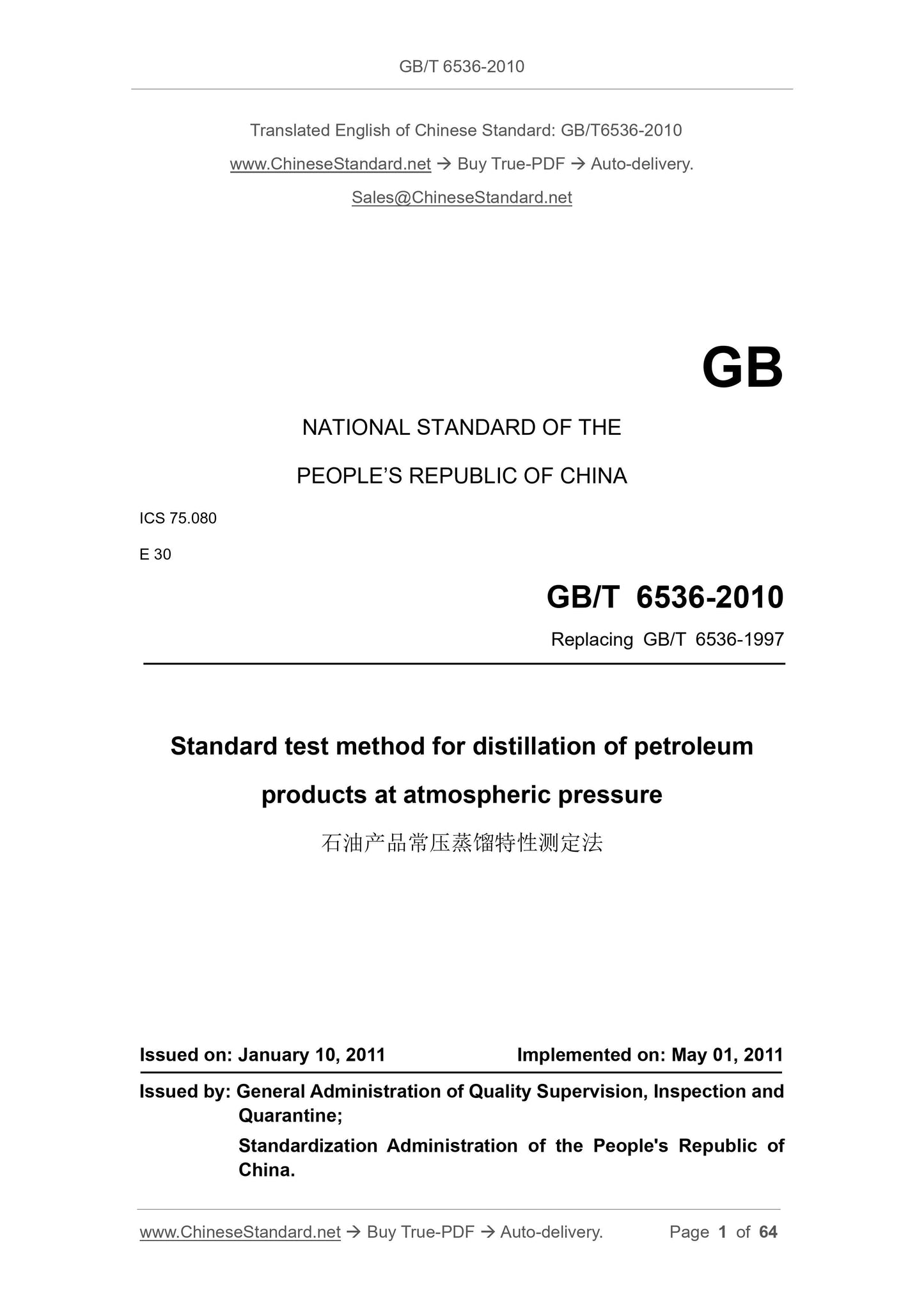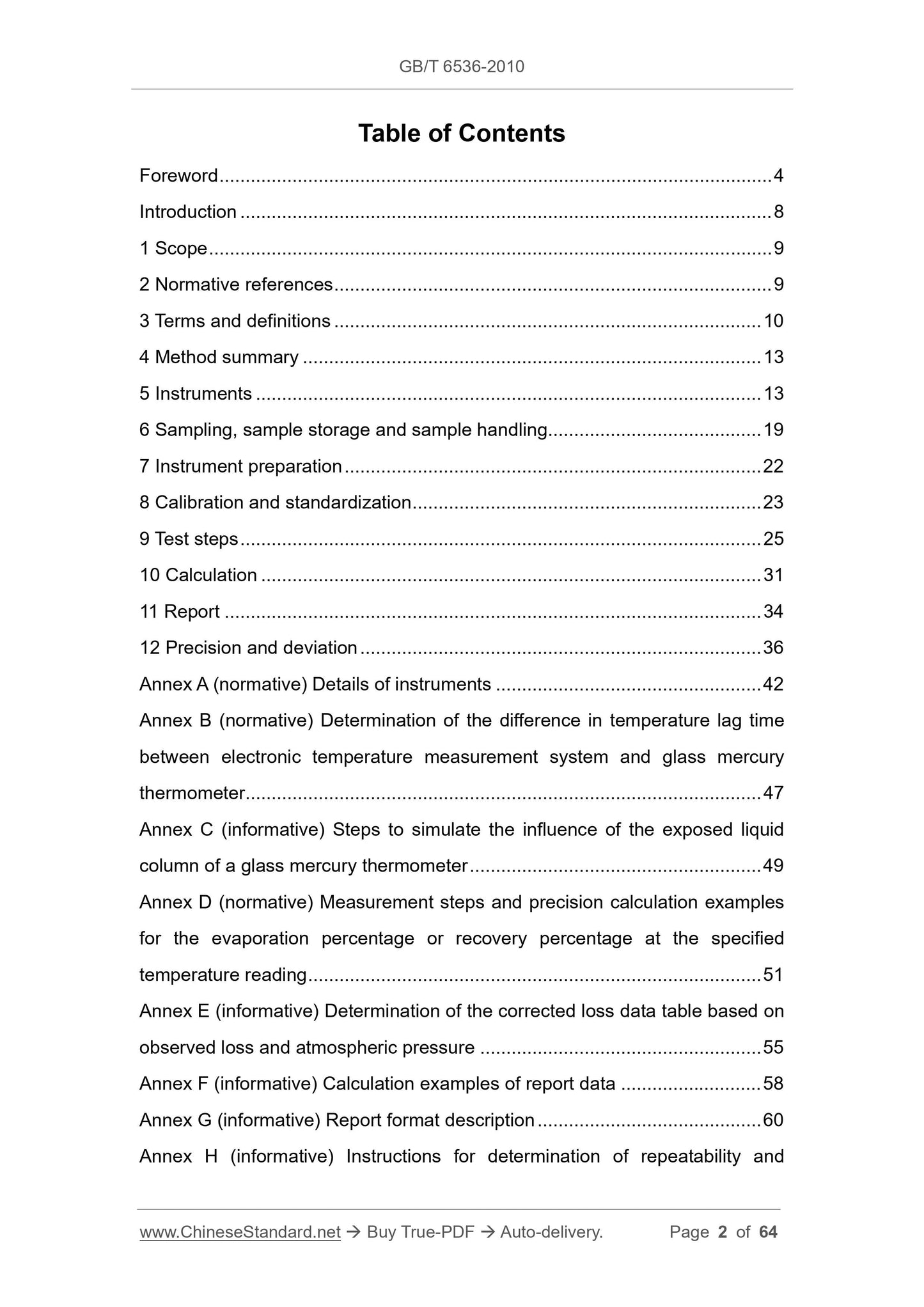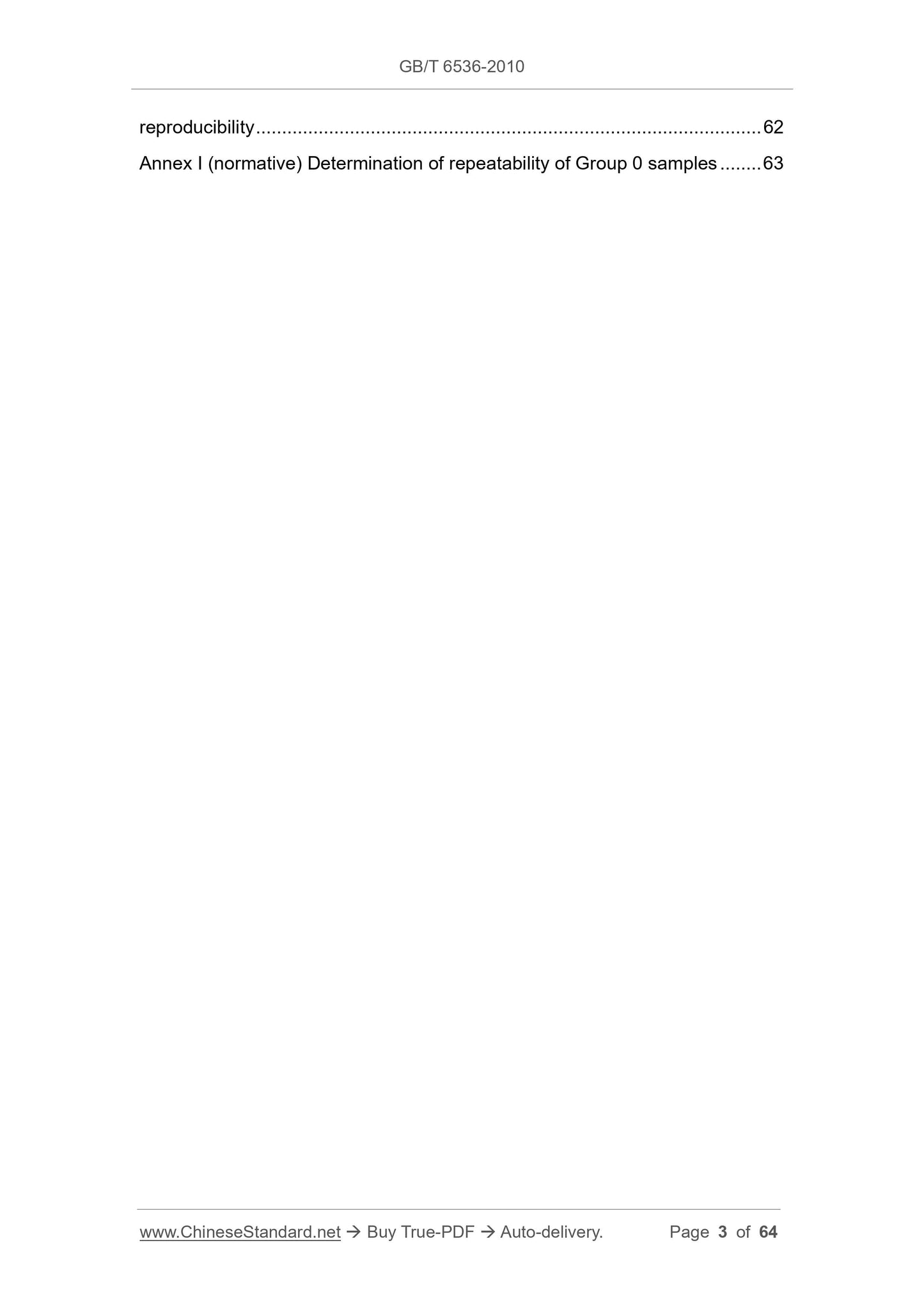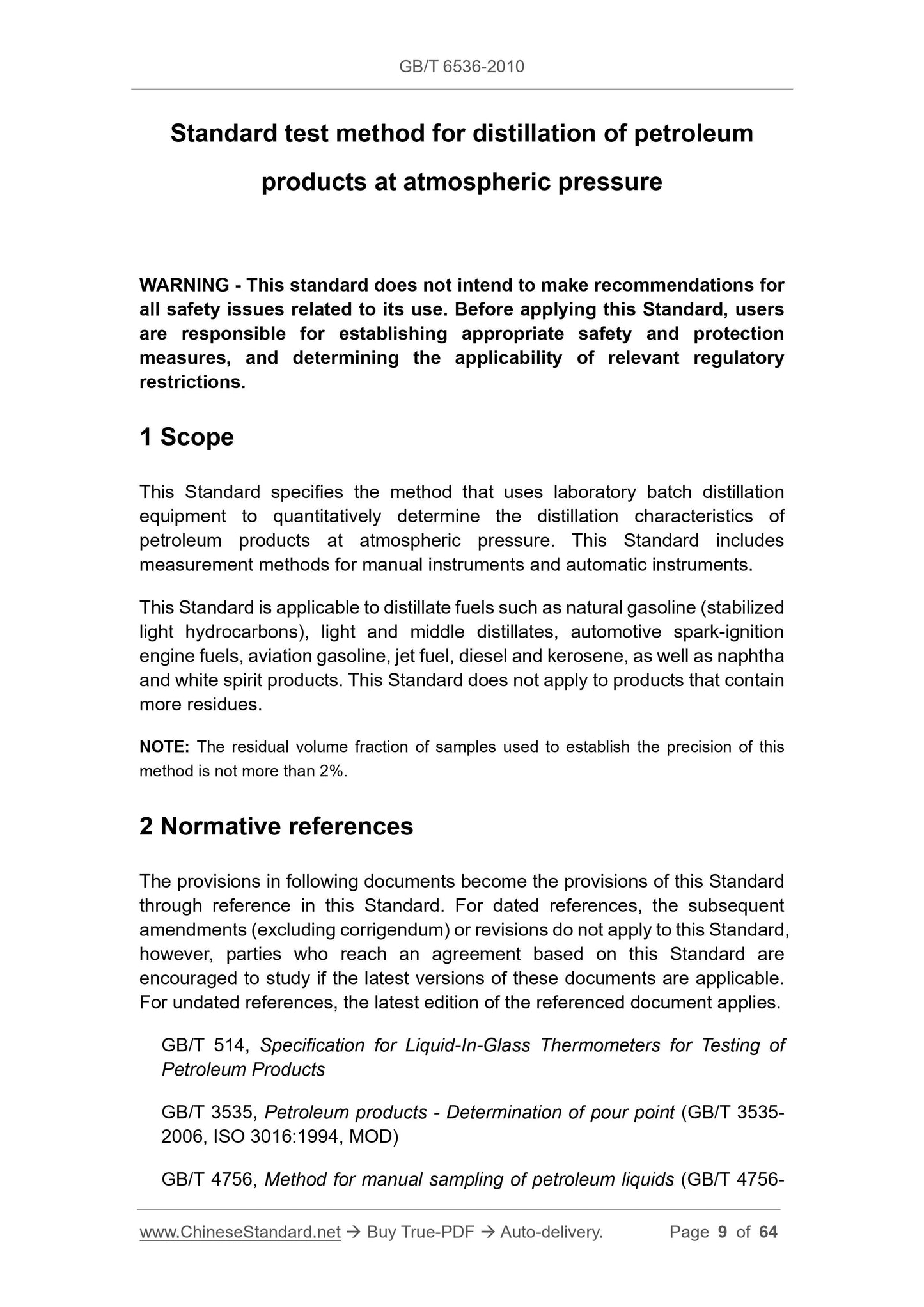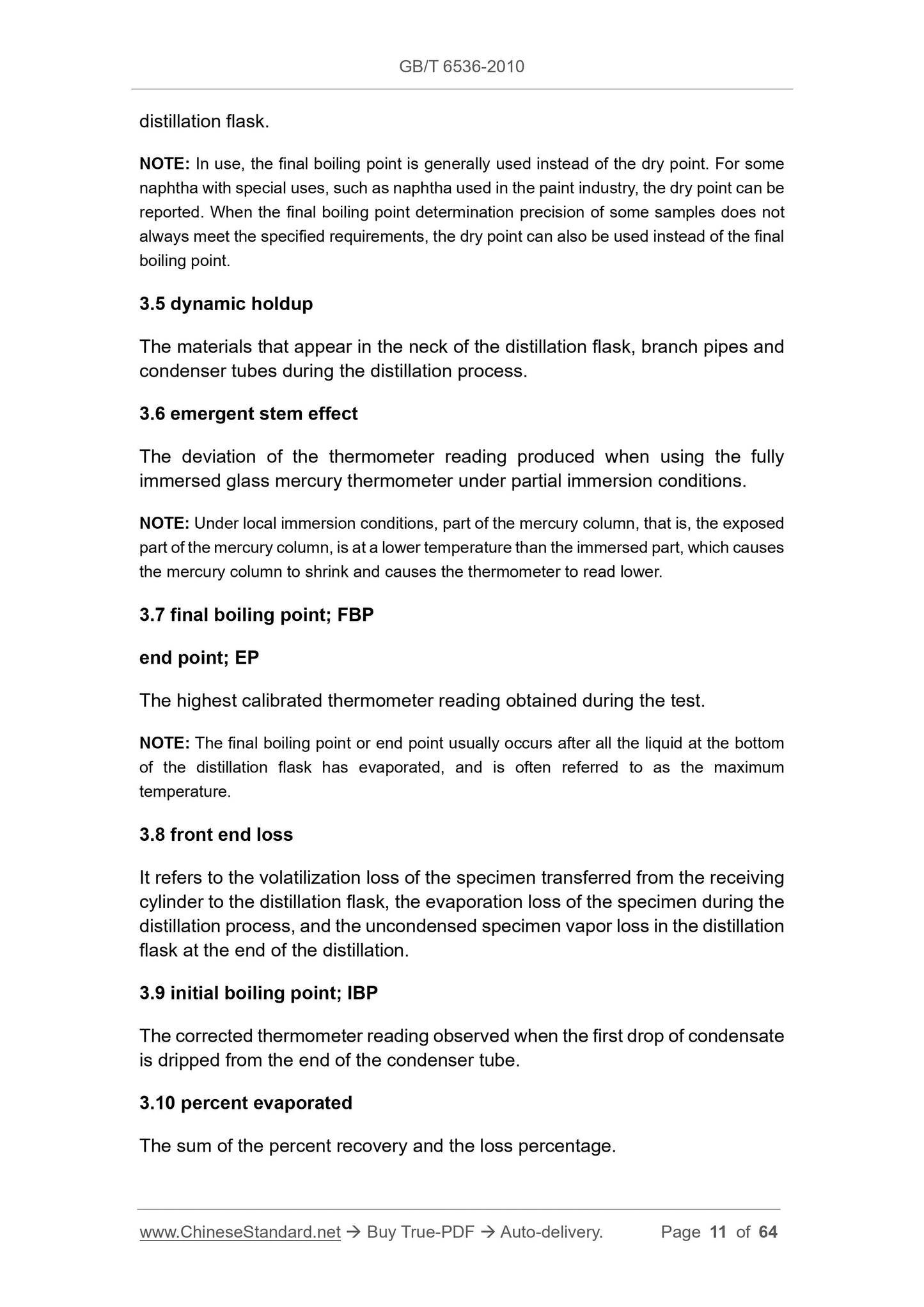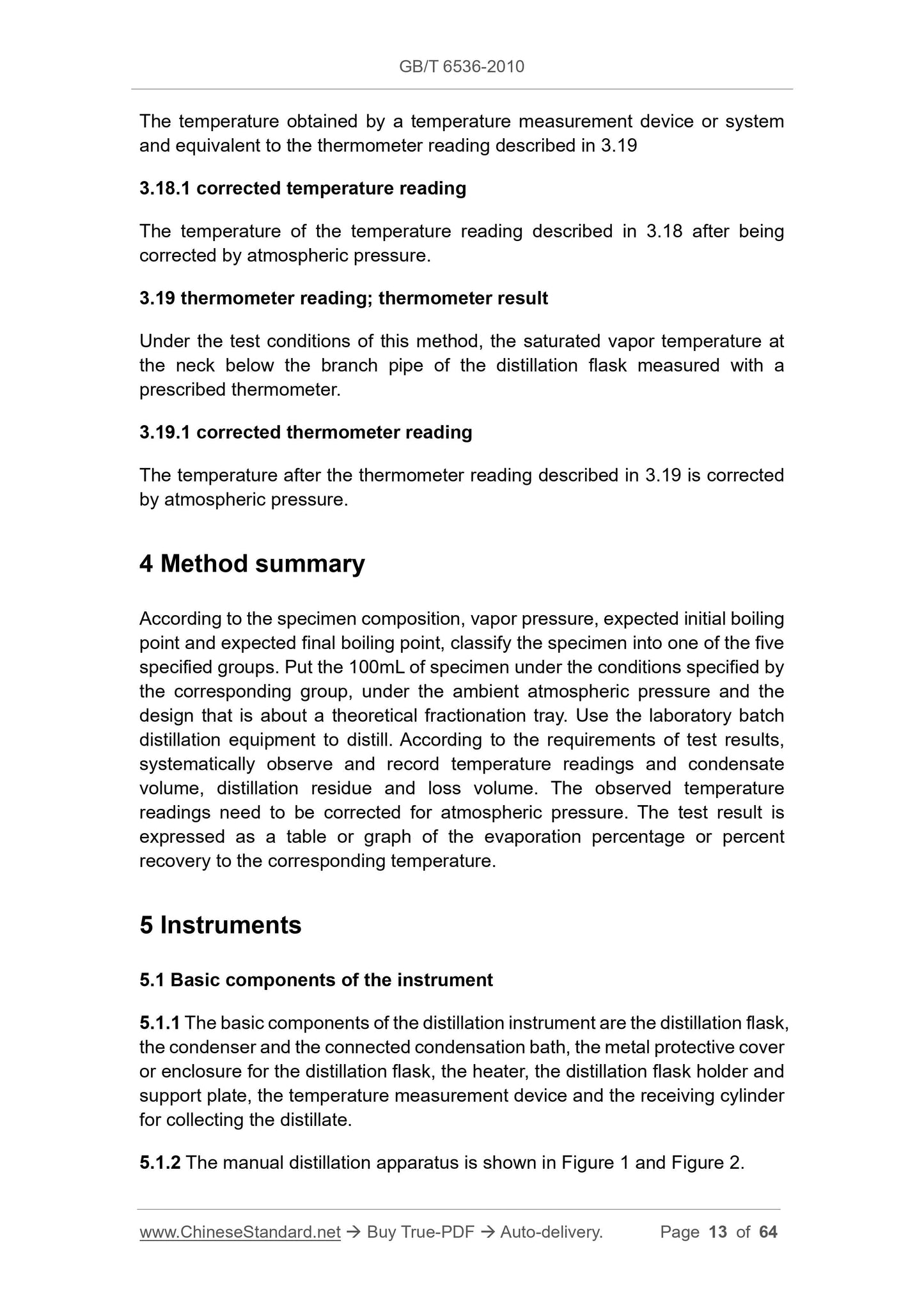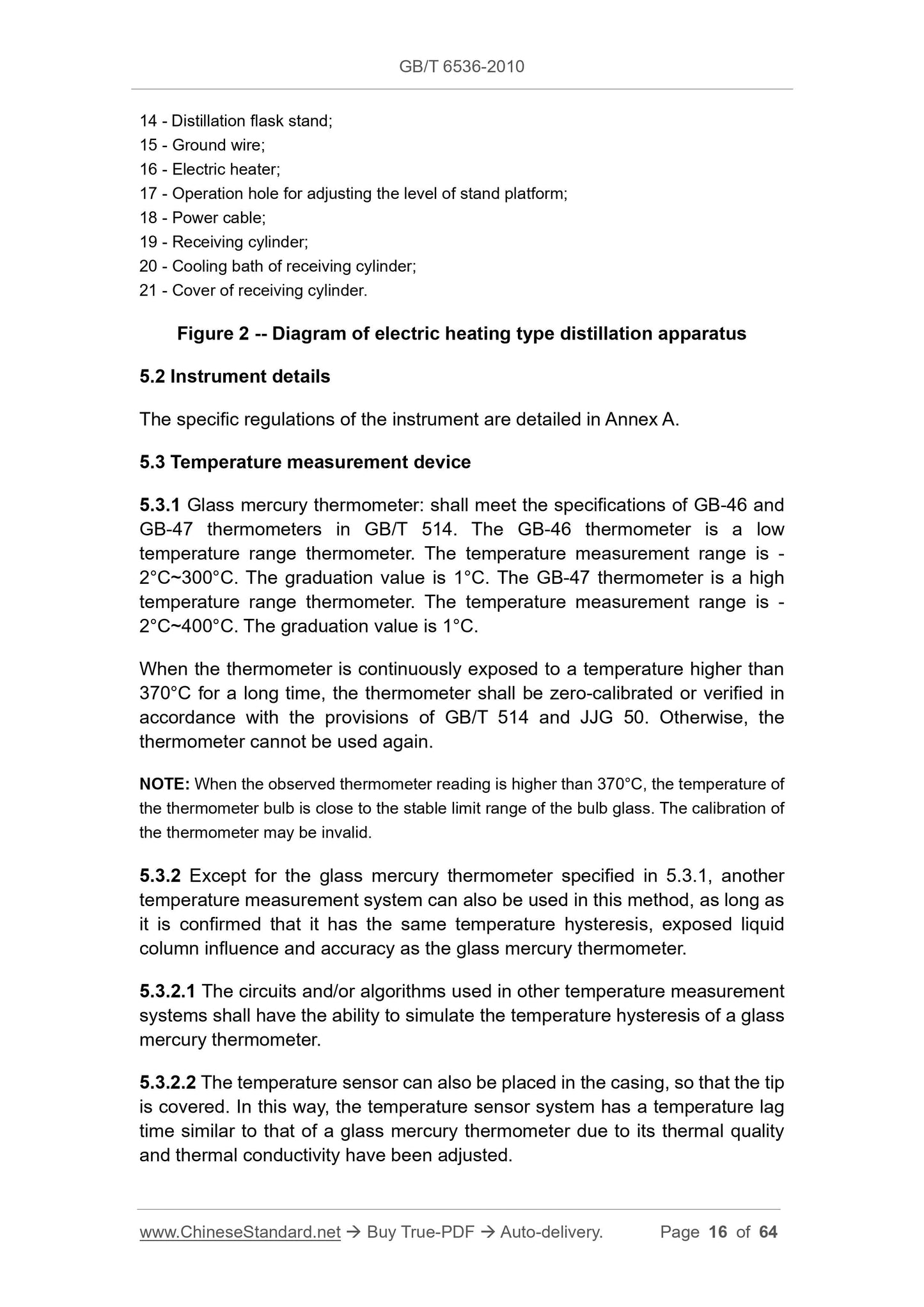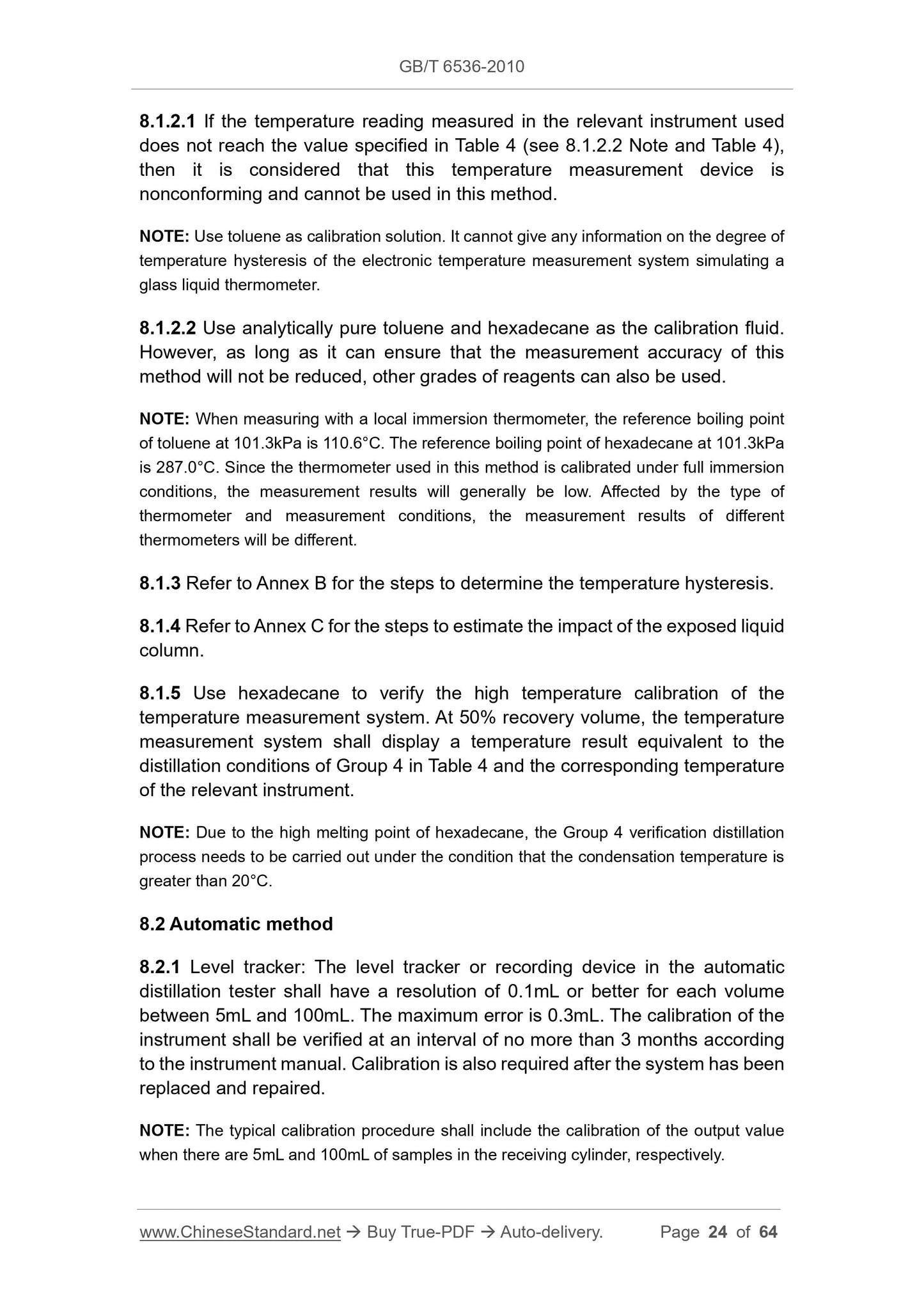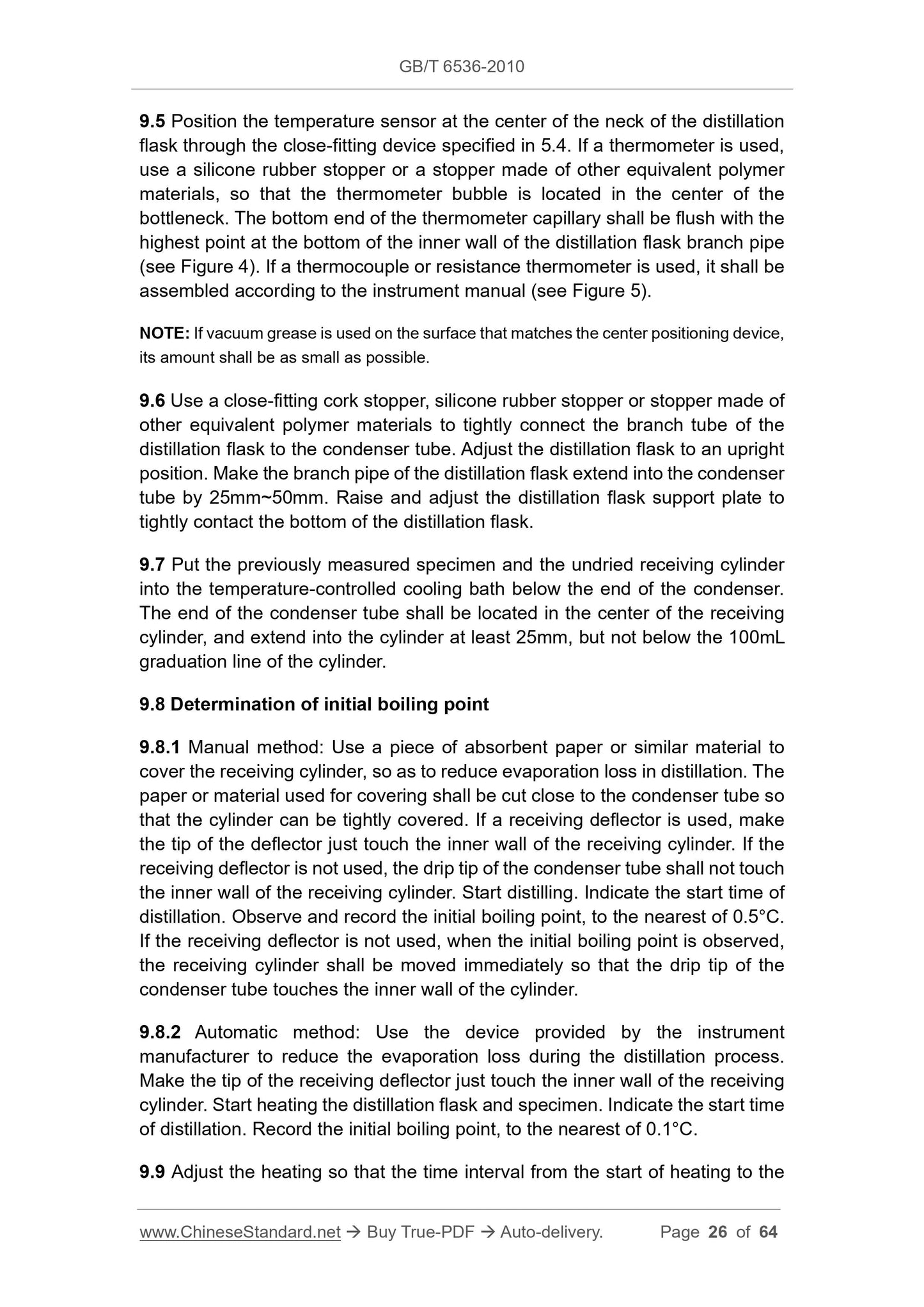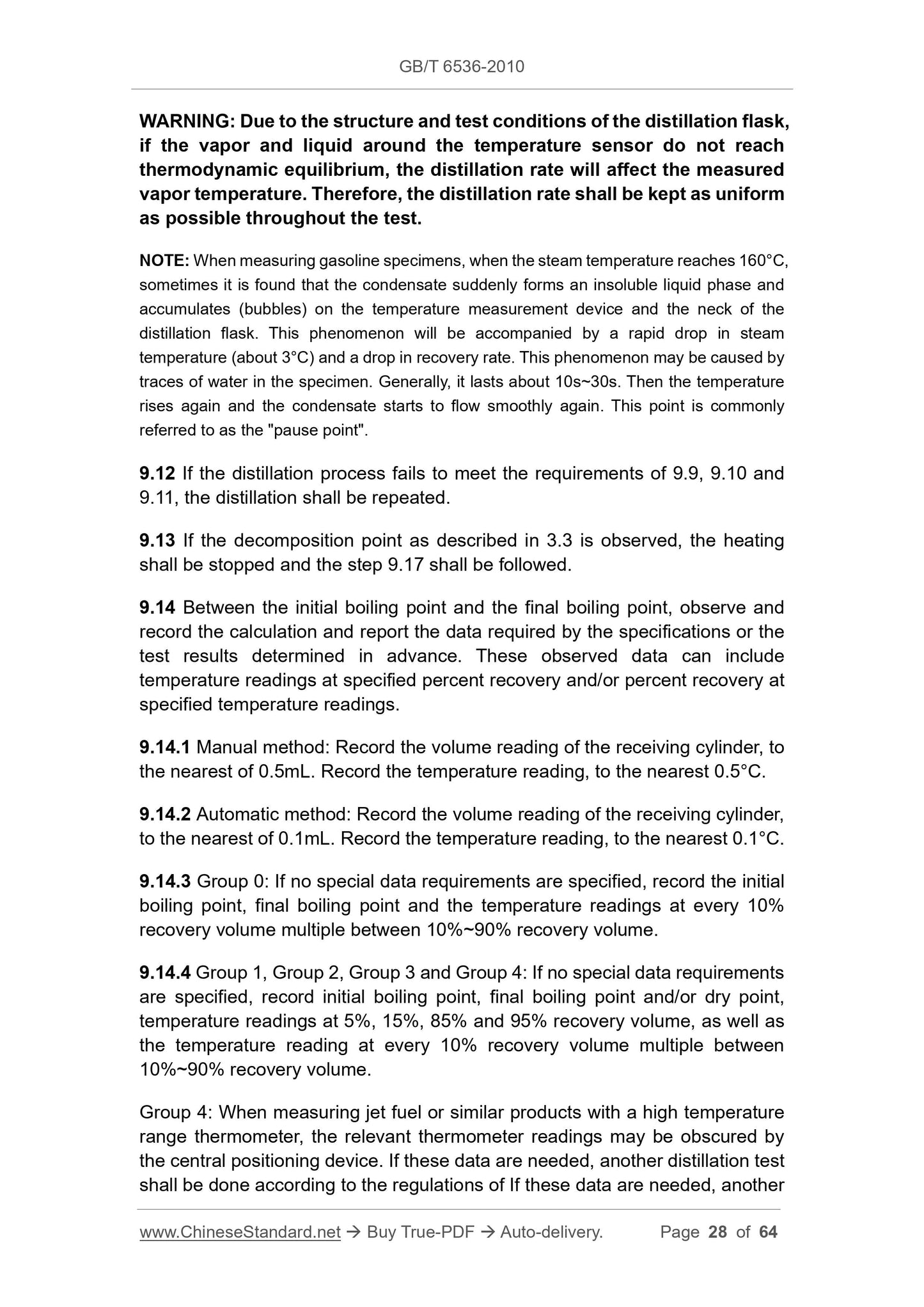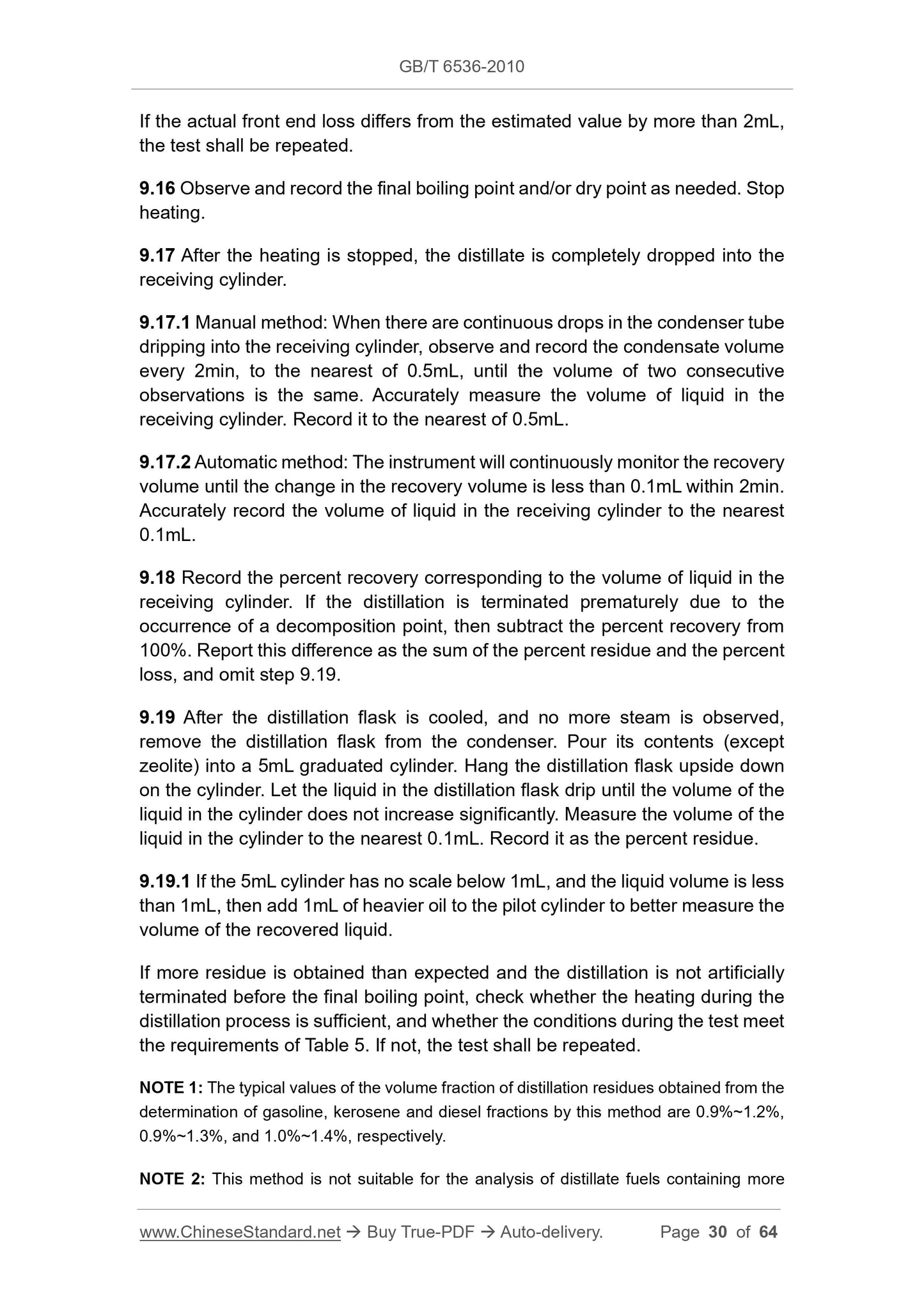1
/
of
11
www.ChineseStandard.us -- Field Test Asia Pte. Ltd.
GB/T 6536-2010 English PDF (GB/T6536-2010)
GB/T 6536-2010 English PDF (GB/T6536-2010)
Regular price
$355.00
Regular price
Sale price
$355.00
Unit price
/
per
Shipping calculated at checkout.
Couldn't load pickup availability
GB/T 6536-2010: Standard test method for distillation of petroleum products at atmospheric pressure
Delivery: 9 seconds. Download (and Email) true-PDF + Invoice.Get Quotation: Click GB/T 6536-2010 (Self-service in 1-minute)
Newer / historical versions: GB/T 6536-2010
Preview True-PDF
Scope
This Standard specifies the method that uses laboratory batch distillationequipment to quantitatively determine the distillation characteristics of
petroleum products at atmospheric pressure. This Standard includes
measurement methods for manual instruments and automatic instruments.
This Standard is applicable to distillate fuels such as natural gasoline (stabilized
light hydrocarbons), light and middle distillates, automotive spark-ignition
engine fuels, aviation gasoline, jet fuel, diesel and kerosene, as well as naphtha
and white spirit products. This Standard does not apply to products that contain
more residues.
NOTE: The residual volume fraction of samples used to establish the precision of this
method is not more than 2%.
Basic Data
| Standard ID | GB/T 6536-2010 (GB/T6536-2010) |
| Description (Translated English) | Standard test method for distillation of petroleum products at atmospheric pressure |
| Sector / Industry | National Standard (Recommended) |
| Classification of Chinese Standard | E30 |
| Classification of International Standard | 75.080 |
| Word Count Estimation | 41,442 |
| Date of Issue | 2011-01-10 |
| Date of Implementation | 2011-05-01 |
| Older Standard (superseded by this standard) | GB/T 6536-1997 |
| Quoted Standard | GB/T 514; GB/T 3535; GB/T 4756; GB/T 8017; JJG 50; SH/T 0771; ASTM D2892 |
| Adopted Standard | ASTM D86-2007a, MOD |
| Regulation (derived from) | National Standard Approval Announcement 2011 No.1 (Total No.166) |
| Issuing agency(ies) | General Administration of Quality Supervision, Inspection and Quarantine of the People's Republic of China, Standardization Administration of the People's Republic of China |
| Summary | This standard specifies the use of quantitative laboratory instrument side given batch distillation under atmospheric pressure distillation characteristics of petroleum products side clinic. This standard equipment includes side manual and automatic instrument set speed. This standard applies to distillate fuels such as natural gasoline (stable light hydrocarbon), light and middle distillates, automotive spark emblem engine fuel, aviation gasoline, jet fuel, diesel and kerosene, and naphtha, solvent oil and petroleum products. This standard does not apply to products containing more residues. |
Share
